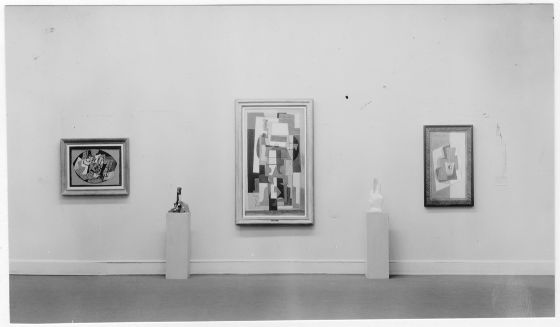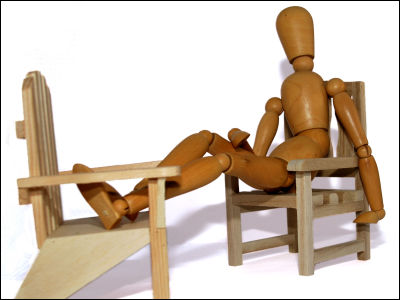An unknown history that exhibitions of art museums began to take place in the white space "White Cube"

ByLux & amp; Jourik
In recent years, a lot of art galleries and galleries have adopted a method of "exhibiting works with a margin in the white ceiling / white wall space", but at the beginning when the facility "art museum" was created In fact, the work was closely exhibited on the entire wall. The white exhibition space is "White cube(White cube) ", but why this exhibition method is currently mainstream, the art information site'sArtsyIt is revealed.
How the White Cube Came to Dominate the Art World
https://www.artsy.net/article/artsy-editorial-white-cube-dominate-art
Many of the museums that have continued until now have been made since the 18th century, including the British Museum in 1759 and the Louvre Museum in 1793. However, the display method of the work at that time was different from the present one, and it was that the works were densely arranged in one space. This was the influence of the Paris salon which spreads artworks tightly from the floor to the ceiling, and it was thought that visitors were more likely to compare the works by visitors.

Although the existence of the art museum as above became a longing for the artists, not only it but also attracted many spectators. In 1857, the number of visitors to the South Kensington Museum, the predecessor of the Victoria and Albert Museum, reached 456,000 a year, and in the 1870's more than 1 million visitors a year are recorded. And with the popularity of museums increasing the number of exhibits, the problem was "people and work too much".
According to Andrew McClellan, a professor of art history at Tufts University, he saw an opinion that from the late nineteenth century, art works should be shown away to avoid congestion. There was also criticism that displaying a lot of works in one place hinders thoroughly appreciating one work.
Following these criticisms, the National Gallery in London began experimenting on the location of the exhibition. Until then, visitors to the museum had to stretch their heads to see works in high places and squat down to see works in low places, but at the National Gallery the work is at the height of eyes I made it to exhibit. Then, by reducing the number of works exhibited on the wall this time, a part corresponding to "margin" was born, "color of the wall" became more important.
So the National Gallery replaced the grayish green wall with red. In the sensory physiology of those days, the red wall was thought to give a harmonious impression to the audience by combining paintings with cold colors and golden picture frame.

However, the effect of reducing the number of works displayed in one space was not limited to the problem of wall color. Initially when the museum was built there was a premise that "the work decorates on the wall", so there was no exhibition place of the work besides the wall. However, restricting the works displayed on one wall, of course, works that can not be decorated in the museum. Since a professional curator was not in the museum at that time, the problem emerged that there was no one who decided "Pictures to exhibit" "Pictures to keep without exhibition". And the "curatorial museum is too crowded" to "curator" occupation was created.
The above problems originally occurred in Europe, but similar problems will be pointed out later in the United States. The Boston Museum of Art was relocated in 1909, but at this time, only the most valuable works were exhibited, and the remainder was decided to be preserved in the underground space accessible only by scholars. And in the exhibition space where people can visit, the work is restricted not to be stuck to the ceiling from the floor to the ceiling but "limited to two rows at most, in contrast to the left and right" and open enough space It was said that it was exhibited. In addition to this, various discussions were done to raise the understanding of the work, such as writing problems.

Meanwhile, in Germany, the improvement of the display method of the museum has progressed, and in the 1930's when the Nazis · Germany reigned the country, "white" will be taken as the standard color in the museum wall. Nazi · Germany used white as a pure color. It is said that Nazis · Germany invented "white wall" sometimes because it is after World War II that whites are to be taken in British and French museums after World War II.
Although the way of exhibiting works in the United States and Germany improved in the way as described above, it approached the current white cube, but finally the strategy of the White Cube was strengthened by the New York Museum of Modern Art (MoMA ) It is said that Alfred Bar, the first director of Mr. Alfred Bar. At the same time Harvard Art Museum and Wadsworth Asinium Museum also adopted the White Cube approach, but MoMA has institutionalized these approaches and promoted the publication of standards.
In 1936, MoMA set up an exhibition called "Cubism and Abstract Art" (Cubism and Abstract Art) to display the white cube. In Cubism and Abstract Art, the ceiling and walls were painted white and the lights to illuminate the work were simplified. The wood board of the baked soup is used for the floor, the number of works is modest, and only one work is decorated on one wall. Mr. Ber is seeking to give a visual impact on each work, all political and social backgrounds are ignored, and by wrapping around the flow of art history so far, art works are more I succeeded in exhibiting it in a powerful form.

The current MoMA building opened in Manhattan's Midtown 53th Street in 1939, but I am perfectly in the design flow as above. The building itself does not make a strong claim, the entrance is a glass door like a department store, and inside there are galleries focused on "works".
The museum which was built in the 19th century put too much emphasis on making a large space to display the work and did not fully consider making an ideal condition to appreciate the art work, McClellan Mr. The history of the White Cube was established by modern art, but it continues to be used even now as it is changing from the era of modern art in the 21st century, the influence given to the world of the art stayed in one style It can be said that it was not big enough.

Related Posts:
in Creation, Posted by darkhorse_log







